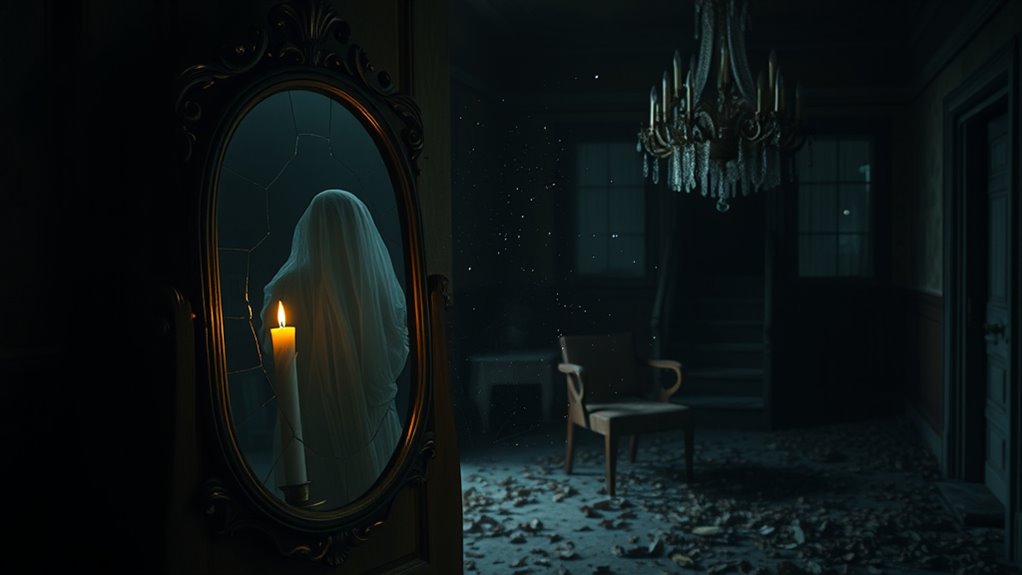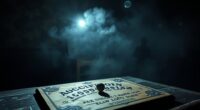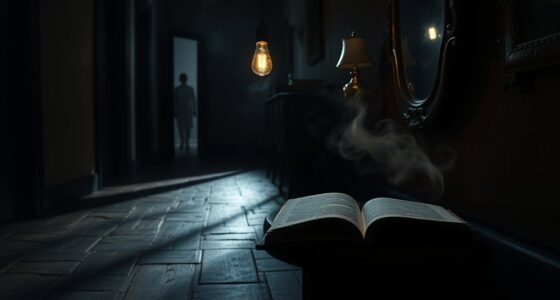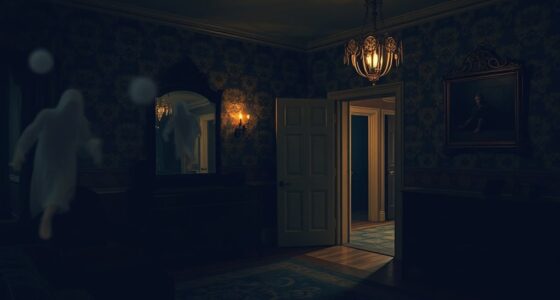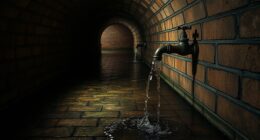To capture a ghost on camera, start by using a sturdy tripod for stability during long exposures. Set your camera for 10 to 20 seconds, and consider your model’s movement—shorter movements create ethereal effects. Don’t forget to use a low-power flash to freeze motion and reveal details. Choosing clothing that contrasts with your environment enhances visibility. Want to uncover more techniques and tips? Keep exploring to enhance your ghost photography skills!
Key Takeaways
- Utilize long exposure photography for 10 to 20 seconds in dim lighting to capture ghostly figures.
- Incorporate a sturdy tripod and remote release to ensure stability and minimize camera shake during extended exposures.
- Experiment with model movement; slower movements create solid images, while faster movements yield more translucent effects.
- Use low-power flash to freeze model motion while revealing details in ghost images without overpowering the scene.
- Select contrasting clothing for models to enhance visibility against darker backgrounds, improving the clarity of ghostly appearances.
Ghostly Gear Essentials
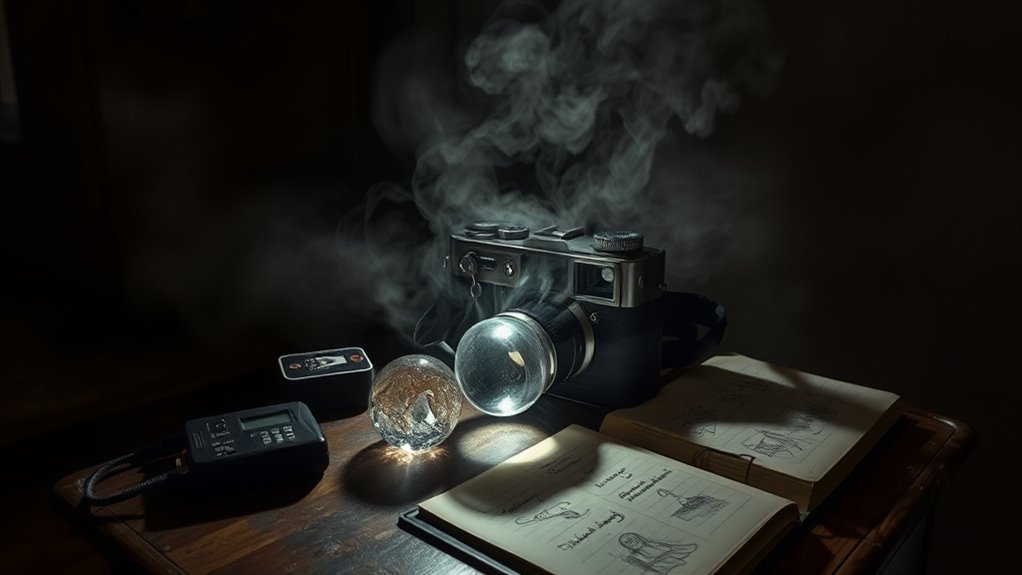
When you’re ready to capture a ghost on camera, having the right gear is essential. You don’t need specialized equipment; any camera and lens with manual controls will do.
A sturdy tripod is vital for stability during long exposures, which are key to effective ghost photographs. To maintain camera stability during exposures longer than 30 seconds, consider using the Vello Shutterboss II or a remote release to minimize shake.
A sturdy tripod ensures stability for long exposures, essential for capturing effective ghost photographs. Use a remote release to minimize shake.
Additionally, an off-camera flash is necessary to reveal the details and depth of spirits, enhancing your ghost images. If you’re shooting in bright daylight, a neutral density filter will allow longer exposures, making it easier to capture those elusive ghostly phenomena.
Get your gear ready, and happy ghost hunting!
Techniques for Capturing Ethereal Images
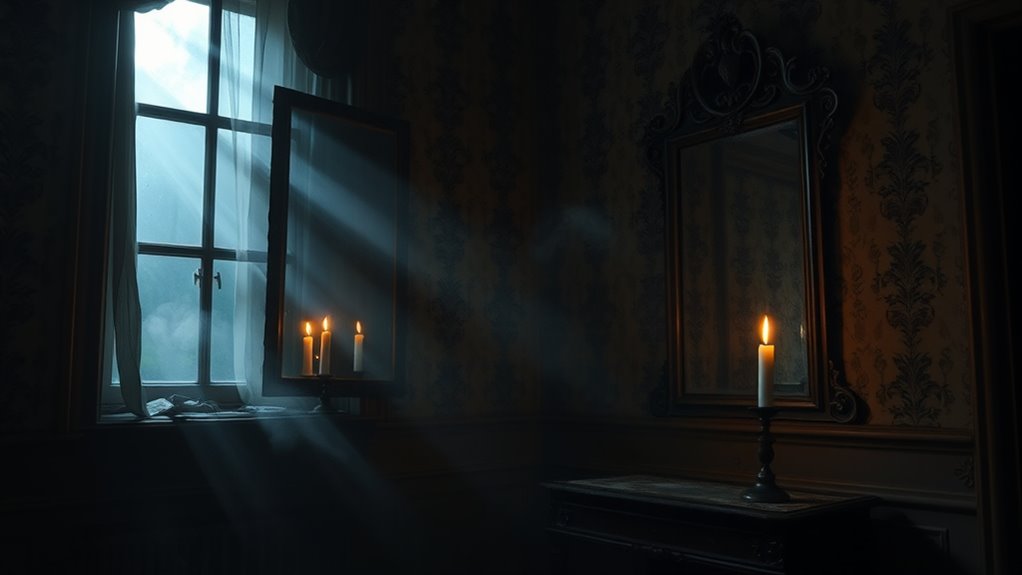
Capturing ethereal images of ghosts requires a blend of technique and creativity. Start with long exposure photography; set your digital camera for 10 to 20 seconds in dim conditions. This allows movement to create unusual shapes, giving your ghost photos an otherworldly feel.
Use a tripod for stability, and experiment with model movement. Longer presence creates solid appearances, while shorter times yield translucent images. Incorporate off-camera flash at low power to maintain depth and detail without overpowering the scene.
Choose contrasting clothing based on the background—darker settings enhance lighter outfits for clearer ghost images. Finally, if your camera allows, use multiple exposures to layer different movements, capturing a dynamic essence in your spirit photography while ghost hunting in old houses.
Experimenting With Movement and Light

Long exposure photography opens up exciting possibilities for experimenting with movement and light, allowing you to create enchanting ghostly effects. By keeping a model still for part of the exposure and having them move during another, you can achieve a blend of solid and ethereal appearances.
Use a low-power flash to freeze the model’s movement while capturing multiple ghostly versions in one image. Incorporating back-lighting techniques enhances depth, making spirit figures stand out against darker backgrounds.
Start with an exposure duration of around 10 seconds to refine the clarity of your ghost images. If you’re shooting during the day, a neutral density filter can help extend exposure times, resulting in even more pronounced ghostly effects through movement and light manipulation.
Frequently Asked Questions
How to Capture Ghosts on Camera?
To capture ghosts on camera, you’ll want to use a digital camera with manual settings and a sturdy tripod for stability.
Experiment with long exposure times, like 10 to 20 seconds, to catch any movement. Using off-camera flash can help freeze action and enhance details.
Choose contrasting clothing for your subjects to make ghostly figures stand out against the background, and pick locations with a spooky vibe for the best chances.
How Do People Catch Ghosts?
Imagine you’re a detective in a shadowy domain, seeking whispers of the past.
People catch ghosts by using long exposure photography, which paints movement like a brush on canvas over time. They stabilize their cameras with tripods to capture the ethereal details in dim light.
Off-camera flashes illuminate spirits without startling them. By combining these techniques with specialized tools, you can reveal the unseen and document the mysteries that linger in the air.
What Camera Settings Are Needed for Ghost Effect?
To create a ghost effect in your photos, set your camera to a long exposure of 10 to 20 seconds.
Increase the ISO for better low-light performance, and use manual focus to keep your subjects sharp.
If you’re shooting during the day, add a neutral density filter to avoid overexposure.
Experiment with different shutter speeds and aperture settings to capture the perfect blend of ethereal presence and the surrounding environment.
Happy haunting!
How to Get a Picture of a Ghost?
To get a picture of a ghost, start by using a good-quality digital camera with manual controls.
Set up a tripod to maintain stability during long exposures, ideally between 10 to 20 seconds in low light.
Experiment with multiple exposures and choose contrasting clothing for your models to enhance visibility.
Finally, edit your images to identify any unusual shapes, ensuring you rule out common distractions like dust or lens flares.
Happy ghost hunting!
Conclusion
Now that you’re armed with the right gear and techniques, it’s time to venture into the unknown. Remember, capturing a ghost isn’t just about the camera; it’s like fishing in a vast ocean. Sometimes, you’ll reel in nothing, while other times, you might snag the catch of a lifetime. Stay patient and open-minded—like the fisherman who waits for the perfect wave, you just might find that ethereal moment waiting for you around the corner.
